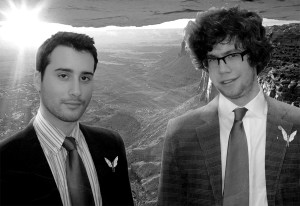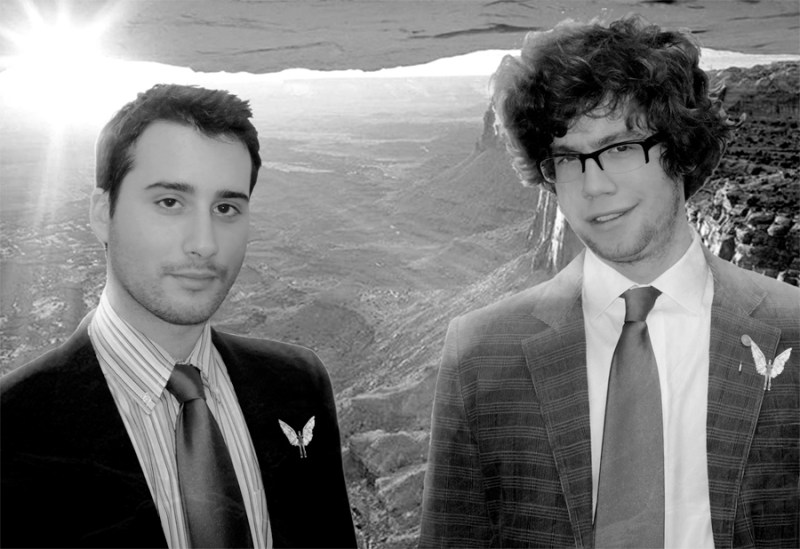
Stepping into the Chappie offices isn’t unlike setting foot into your older brother’s room. A really weird, cool older brother. In the small, square room where the Chappie regulars and their guests congregate once a week (that’s 8:30 p.m., Wednesdays, Nitery 2nd floor), a pair of battered sofa chairs face a ring of mismatched sectionals. Candy-colored vintage Chappie issues line the wall; they could easily pass for your brother’s retro comic collection. In the corner, next to a bird cage (no explanation available), is a bookcase of Chappie-themed memorabilia: a few cans that once held “Chappi” brand dog food, a framed photograph of Die Antwoord’s badass emcee Yolandi Visser showing off a “Chappie” tattoo on her forearm, another framed photograph of the crew crashing Kirsten Dunst’s birthday. Yes, they did that.
For those on the outside, the Chappie is impenetrable. Weird, absurdist, not funny – the Chappie has weathered such labels its entire 106-year existence. What the people on the inside will tell you is that the Chappie doesn’t seek to be embraced by the mainstream; its lifeblood is in opposition. The group has had historic friction with the University administration, such as in 1961, when editor in chief Brad Efron ran a risqué parody of Playboy, causing the magazine to undergo suspension. In 1975, editor in chief Mike Dornheim (’75) hooked up a speaker to a vending machine after the heiress Patty Hearst was famously kidnapped in Palo Alto and cried out from behind the glass, “Help, I’m trapped! I’m Patty Hearst!” (A frightened girl called the police, twenty squadron cars showed up and entered into a standoff with the vending machine )
The Chappie continues its history of pranking today with its annual publication of a fake Daily, a publication resembling in form and content The Stanford Daily. In fact, pranks between The Chappie and The Daily have played out in past decades, including a 1980 publication in the actual Daily when a group of Chappie members snuck a photograph and report that the University’s bowling team had just perished in a plane crash. The Chappie’s mischief is timeless, just like its mascot, a red jester often seen with a sly smirk on his lips. The jester’s all about having a laugh with you, but rest assured, he does things his own way.
Sitting in those two especially worn-out chairs are the current Old Boys (as the editor in chiefs are called), Sam Coggeshall (’12) and Alex Hertz (’13). As resident Old Boys, the pair presides over the publication of this year’s issues and front the Wednesday meetings (in case you’re wondering whether there have been female Old Boys, the answer is yes). Coggeshall, a spiffy-dressing senior with a brown, curly fro and a goofy smile, and Hertz, a clean-cut junior with a penchant for chambray button-downs and a laid-back grin (I don’t know why I’m fixating on smiles), are roommates, best friends “4 lyfe” (Hertz tells me) and a bit of a balancing act. Hertz describes himself as the creative force, channeling into the Chappie his absurdist and silly brand of humor. He describes Coggeshall as approaching humor from an intellectual stance; Hertz tempers his fellow Old Boy’s trademark energy, while Coggeshall keeps in check Hertz’s absurdist humor. What results is a lovely family portrait and the makings of a hit CBS sitcom. As described by Hertz: Coggeshall is the boring father figure, Hertz is the crazy uncle and they’re raising a son together, which would be the Chappie.
So how about that damn humor? The question on everyone’s lips is: Do people get the Chappie, and does it matter if they do? For the denizens of this office, the majority would say no. Hertz describes his mission as producing the funniest magazine possible; sure, he’d like to see it be accessible, but preserving that signature Chappie voice is more important to him. Perhaps Old Boy Emeritus Joshua Meisel (’12) puts it best, when he relates to me some wise words from the comedian Dan Minsk, a successful stand-up comedian despite his high-brow, obscure humor. Stand-up comedians, he explained, have control over the timing of their jokes; that’s how they make their material funny. Therein lies the challenge of publishing humor in a magazine: It’s up to the reader to find for him or herself the rhythm of the jokes. It would be like scattering music sheets on the sidewalk and expecting passerby to appreciate a symphony’s aural beauty.
This presents somewhat of a catch-22 when it comes to ASSU special fees. As many know, the Chappie recently failed to gain student-voted special fees for the second year in a row, a blow to its ego if nothing else. How does a publication that prides itself on its contradiction of the mainstream reconcile with its needs for, well, money? In cases like this, the popular vote is important. And unfortunately, that’s something the Chappie simply isn’t engineered to attract. Time will tell which direction the Chappie will choose to take when, next year, two new Old Boys, Kian Ameli (’13) and Daniel Koning (’14), will take over the beat-up sofa chair thrones. For now, Hertz invites us to look forward to the upcoming “Funk” issue, of which he is particularly proud.
The Chappie is weird, proudly so. And at the steering wheel of this weird, weird ship are two quirky guys sitting in a pair of beat-up La-Z-Boys, fighting the “man” (that would be the Stanford status quo) one “Face Cat” at a time. That is to say, one absurdist joke at a time. Amen.
